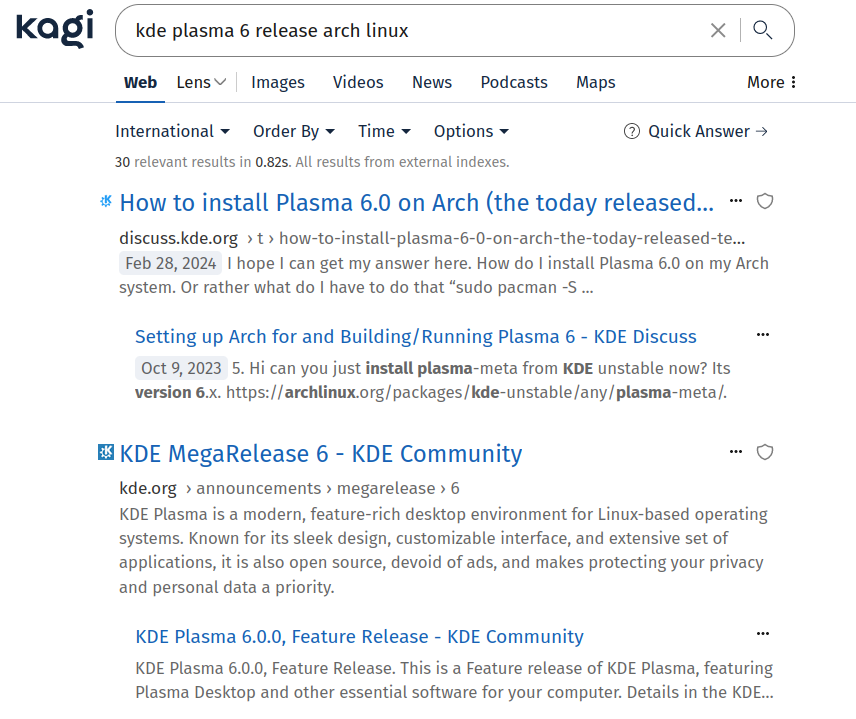

Sigh…as a species, we are really not mature enough to be using “advanced” tech such as AI or LLMs. It’s no wonder we get crap like this instead of the use cases we see in shows like Star Trek: The Next Generation.


Sigh…as a species, we are really not mature enough to be using “advanced” tech such as AI or LLMs. It’s no wonder we get crap like this instead of the use cases we see in shows like Star Trek: The Next Generation.


I’m not familiar with OpenSUSE or Manjaro, but if you are familiar with Ubuntu, then I would recommend either Linux Mint or Pop OS. Both are Ubuntu-based, and Pop OS has a Desktop Environment that is very similar to macOS. Pop OS is also suited for gaming with Steam, but then again, I think Steam works well on any Linux distro. The team behind Pop OS is currently doing some major revamps to the OS, but these changes are not yet released for stable use.
If you are building a new machine, I highly recommend you check to see if your HW will be compatible with Linux. You might want to pay close attention to the GPU and Wifi card. NVIDIA requires special drivers to work with Linux, while AMD works out of the box. As for the Wifi cards, depending on the wifi drivers that are installed in the distro, you may have to tinker a bit to get that to work. I recommend having the option to use Ethernet at the time you are setting up the distro, just so you have internet access to download what you need.


Based on my experience, I think you can. Many distros nowadays offer ways to do things without the use of the terminal. In Linux Mint, for example, you can rely solely on the Update Manager to update all installed applications and modules rather than using the terminal. You can also uninstall apps by right-clicking on them in the Menu and selecting the uninstall option. And finally, if you want to move files around, even to some locations that require root, you can do that using the File Explorer app (e.g. Nemo).
That being said, when I started on my Linux journey, I made it a point to actually learn some terminal commands, because I saw it as an important feature in Linux and a good skill to possess.


Steam is probably the best platform for gaming on Linux right now. Here are some games I recommend that run well on Linux:


I would like to, but I’m running Arch with Cinnamon, and that desktop environment only has an experimental version of Wayland implemented. I’ve tried it, and it’s too buggy to be used as a daily driver.
For my own learning and understanding, why does it take that long for GNOME on Arch?
Initially, it is quite bland, but I have already downloaded the Linux Mint themes and backgrounds, plus some other theme options that were recommended to me. So, in terms of themes, I’m okay with that.
As for the Wayland option, that is available as a selection in the Login Screen. I don’t use it very often, because it is quite buggy.
By “news”, I mean do we have any major updates, like improvements to the experimental Wayland support. From the link you shared, that minor update doesn’t really mean much to me.


Overall, pretty decent.


Interesting…for reference, let me share a screenshot of the first two results I get from Kagi.



What’s your use case for NFC on your Pixel 4A?
An excellent choice to use Linux Mint! If my parents allowed me to switch their computers to Linux, I would’ve chosen Linux Mint as well for them. But, I probably wouldn’t give them the Windows 10 look.
I was asking a similar question a few months ago, and my search turned up Joplin. It’s a free, open source app that works across multiple platforms and can sync data through a cloud service, either through Joplin’s own cloud storage or through a third-party cloud storage like Dropbox.
Well…if you’re learning English as a foreign language, I can see how this can ease the learning process. It’s a useful tool in that case, but afterwards, it’s important to read and understand the original text.